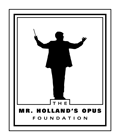« Vinyl Releases of the Week: October 12, 2011 | Home | Vinyl Releases of the Week: October 19, 2011 »
Top 10 David Bowie Albums
Post By: Katherine.Eleanor
There’s no denying the impact this English artist has had on music over the last four decades. The sheer amount of innovation and eclecticism in his oeuvre is staggering. Therefore, it’s not difficult to fill up these 10 slots. What is difficult is to rank his genius. David Bowie has had so many incarnations—mod Bowie, dancehall Bowie, folk Bowie, glam-rock Bowie, electronic Bowie, “plastic soul” Bowie, pop Bowie—many of which sparked a number of rock sub-genres. So instead of a Top 10 comparing flamboyant, androgynous apples to avant-garde oranges, look at this as more of a history of Bowie’s legacy as told through 10 essential masterworks. And yes, one of his most quintessential songs, “Space Oddity,” is not represented here on these albums. So in the imaginary #11 slot, I’d like to include the song’s 1969 parent album, Space Oddity, for that masterpiece alone is worth hearing on vinyl.
#10: Let’s Dance (1983)

Purists are going to scoff, but I have to include this on the list. Yes, it’s a commercial, MTV-ready ’80s album—but its blockbuster singles “Let’s Dance,” “China Girl,” and “Modern Love” are fantastic! Plus, the album features a then-unknown Stevie Ray Vaughan on guitar. Things surely went downhill from here, but I’d put that “Stop Now” warning after Let’s Dance instead of Scary Monsters. As far as I’m concerned, this is essential pop music featuring some of Bowie’s biggest hits; if I were stranded on a desert island, I’d certainly want it over, say, the more innovative 1979 album Lodger.
#9: Young Americans (1975)

America loved it, England didn’t; Ziggy worshippers felt alienated by it, new fans ate it up. But we’re talking about Bowie here—the ultimate chameleon. The fact that he could go from Ziggy Stardust to this funky soul rocker in the same half of a decade is amazing. Young Americans proved to be Bowie’s first major crossover hit in America thanks in large part to the number-one single “Fame,” which Bowie co-wrote with John Lennon (who sings backing vocals on the track). Bowie described the album as “plastic soul,” and its style is pretty much an Anglo-pop take on Philly soul. While it confused a lot of old fans, standout moments like “Win,” “Fascination,” and the title track, as well as backing from a then-unknown Luther Vandross, make Young Americans rank among Bowie’s best records in my book. Who knew Bowie could be so smooth?
#8: Station to Station (1976)

Enter the Thin White Duke, yet another new character in the Bowie legacy and surely the most cocaine-induced. The Thin White Duke stood somewhere between the plastic-soul rocker of Young Americans and the avant-garde electronic experimentalist that would soon emerge in Berlin. The Thin White Duke was also invited to perform on Soul Train thanks to this album’s Top-10 dance hit “Golden Years.” (Wowie!) I prefer Station to Station over Young Americans because of that added experimental tendency (or is it a drug-induced sense of grandeur and volatility?). Either way, I think it’s got a bit more magic.
#7: Diamond Dogs (1974)
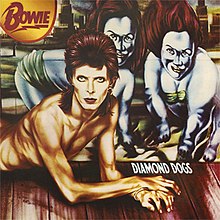
What began as a musical adaptation of George Orwell’s 1984 became the 1974 album Diamond Dogs. The follow-up to Aladdin Sane, Diamond Dogs follows a new character named Halloween Jack to the post- Hunger City and challenges Bowie’s glam-loving fanapocalyptics with a much darker, dystopian sound. Looking back, this was really Bowie’s farewell to glam-rock, before he dove head-on into soul and disco-funk. Though it was a hit in both the U.S. and U.K., spawning the oft-covered glam anthem “Rebel Rebel” and the proto-punk “Diamond Dogs,” a lot of critics dissed the album. Many fans (myself included) would say, however, that it’s one of Bowie’s most underrated works and surely belongs in the Top 10. Just the fact that Bowie (after firing the Spiders from Mars) took on many of the instrumental duties himself here (including guitar, sax, Moog, and Mellotron) makes the album stand out in his catalog. His grinding guitar style especially lends the album its distinct character. Another reason Diamond Dogs stands out is actually not for the Orwellian nods (the funky soul of “1984” and the rock opera-like “Big Brother”), but for the incredible trilogy of “Sweet Thing”/”Candidate”/”Sweet Thing (Reprise).” And, of course, the controversial album art.
#6: “Heroes” (1977)

The second installment in the Berlin Trilogy, “Heroes” is essential for the title track alone. The song is one of Bowie’s finest, a story of two lovers who meet at the Berlin Wall. Then you have Side Two, which like on Low, is dedicated to moody instrumentals. Employing synths, horns, white noise, distorted vocals, koto, and even airplane drones, this side totally comes alive and envelopes the listener in an ominous nightmare or a peaceful garden, depending on the track. Released the same year as Low, “Heroes” is decidedly more accessible, incorporating more pop and rock into Side One, as well as guitarist Robert Fripp. Yet Bowie still manages to create one of the most provocative listening experiences ever.
#5: Scary Monsters (and Super Creeps) (1980)

“Ashes to Ashes” alone makes this album essential; a near-perfect song, its clever lyrics reprise the character Major Tom from “Space Oddity.” And then there’s Robert Fripp’s guitar work, which cuts through the album like a knife and adds to its urgent and paranoid feel. Add to that outstanding tracks like “Fashion,” “Teenage Wildlife,” and “Up the Hill Backwards,” as well as a cameo from none other than Pete Townshend (“Because You’re Young”), and you’ve got one of the best albums of the ’80s before the decade had hardly begun. Many people call this Bowie’s last great album, and in many ways it was the last to show such a high level of innovation, inspiration, and raw passion. Hot off the heels of his Berlin Trilogy, it also strikes a perfect balance between the detached electronics of those records and a more melodic pop accessibility while still displaying a raw rock edge. Sure, this album is a bit spotty, but I’d say that the first side is one of the strongest in rock (and on vinyl).
#4: Aladdin Sane (1973)
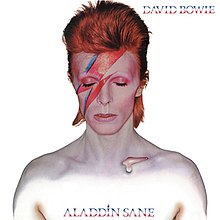
I could go on and on about Mick Ronson’s guitar riffs on “Cracked Actor” and pianist Mike Garson’s freeform piano on “Aladdin Sane (1913-1938-197?),” as well as Bowie’s superb lyricism and minimalist arrangements throughout. I could talk about the glam-rocker “The Jean Genie,” the post-apocalyptic doo-wop “Drive-In Saturday,” the cover of the Rolling Stones’ “Let’s Spend the Night Together,” the perfect pop of “The Prettiest Star,” the cabaret-like “Time,” the sheer rock and roll of “Watch That Man,” the James Bond-esque “Lady Grinning Soul,” and the Iggy Pop-inspired “Panic in Detroit.” Or I could just show you the album cover, which features one of the most iconic images of Bowie ever. But what I think earns this album a place in the Top 5 is its lovely lunacy and mad brilliance. Certainly much beefier, less polished, and all around weirder than its predecessor The Rise and Fall of Ziggy Stardust, the majority of Aladdin Sane was written while Bowie was touring the U.S. as Ziggy Stardust (which is why it’s often dubbed “Ziggy goes to America”). His feelings of paranoia, alienation, and schizophrenia towards the experience are represented not only in the lightening bolt across his forehead or in the album’s title (a pun on “A Lad Insane”), but in the album’s jazzy and experimental detours. The album pushes the glam-rock boundaries in a thoroughly bizarre and exciting way.
#3: Low (1977)

After his drug-addled behavior grew alarming, David Bowie moved to Berlin to sober up. There he collaborated with Brian Eno on a trilogy of innovative, avant-garde electronic albums that captured the isolated feel of the city and the overall emotion of the Cold War. The first in this Berlin Trilogy is Low. Easily Bowie’s most groundbreaking album, Low completely breaks with his glam and soul past. It pairs one side of bombastic, Kraut-rock influenced songs with another of eerie, electronic instrumentals. What’s amazing is that in this cerebral world of dense, dissonant synths, sharp guitars, robotic pulses, alien drums, and unnatural layers of vocal overdubs is not only a pop sensibility but a deeply personal record that reflects Bowie’s own feelings of isolation and fragility. Low definitely challenges listeners, but the payoff is well worth it. “Be My Wife,” “Sound and Vision,” “Breaking Glass,” “Always Crashing in the Same Car,” “Warszawa”—I could listen to these songs a hundred times and still find something new to appreciate. Low breaks the pop and rock paradigms in a deeply affecting way.
#2: Hunky Dory (1971)
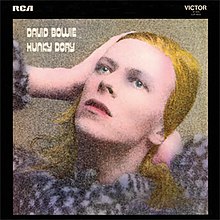
Reasons: “Changes,” “Life on Mars?” and the centerpiece “Quicksand.” Inspired by the Velvet Underground and Bowie’s recent discovery of New York’s underground rock scene, Bowie’s fourth studio album, Hunky Dory, is a surreal masterpiece of piano-oriented pop. Hunky Dory is full of cultural references, plus a touch of camp and theatrical melodrama. The album also showcases a drastic improvement in Bowie’s songwriting; on it, he pays tribute to Bob Dylan (“Song for Bob Dylan”), Andy Warhol (“Andy Warhol”), and Lou Reed (“Queen Bitch”), while also finding his own artistic footing. A hallmark postmodern-pop record, Hunky Dory is the most important album in Bowie’s career and his true artistic breakthrough. It’s one I know I can listen to over and over again and still see myself loving five years, 10 years, 20 years down the line.
#1: The Rise and Fall of Ziggy Stardust and the Spiders from Mars (1972)
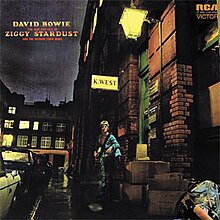
Bowie’s most legendary incarnation was as the androgynous alien rock star Ziggy Stardust. It seemed that it was through this character that Bowie was able to realize his full potential as a performer. The Rise and Fall of Ziggy Stardust and the Spiders from Mars plays like a greatest hits record—though “Suffragette City,” “Moonage Daydream,” “Ziggy Stardust,” and “Starman” are perhaps the most well-known tracks. Full of precise harmonies, captivating arrangements, and theatrical extravagance, it is one of the few occasions in music history that an artist was able to execute his/her vision so magnificently. (Sgt. Pepper also comes to mind.) It launched a huge Bowie cult and remains not only an essential glam-rock record but one of the most influential rock album’s of all time. Bowie will forever be inextricable from this character, and music will be forever changed because of this album. Plus, Bowie’s band the Spiders from Mars put on one hell of a performance, most notably guitarist Mick Ronson.
Join the Conversation: Post a Comment!
Topics: Artist Tributes, Music, Musicians I Like, Record Collecting | No Comments »


